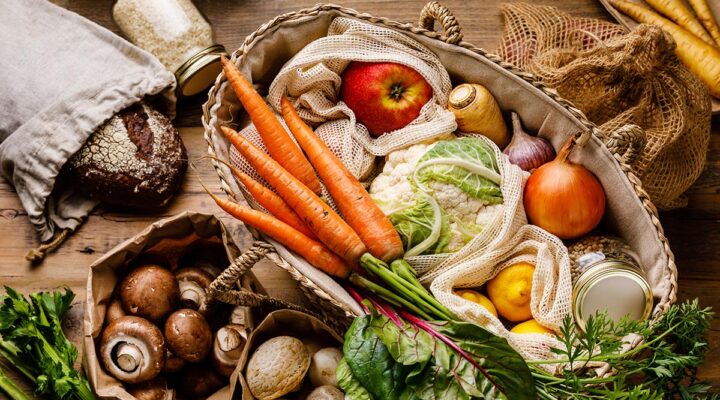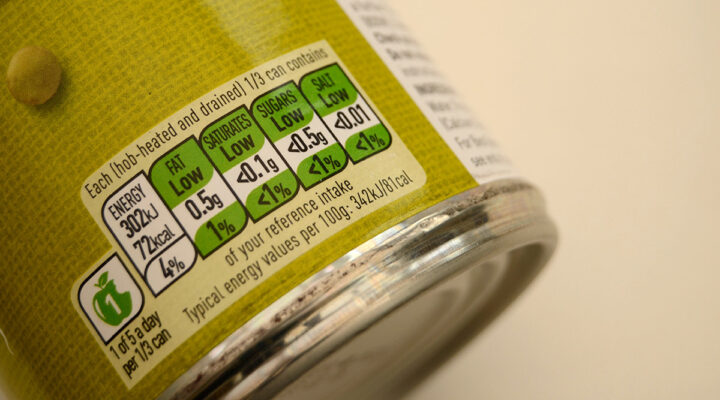What Is the DASH Diet and Is It Safe?

Thanks to TikTok, it seems like every other day there’s a new diet buzzword to know. From the Whole30 diet to keto, there are countless diet plans (some of them more controversial than others) that promise to help you lose weight and feel better.
The latest trend that’s doing the rounds? The DASH diet. As statistics show that the average UK adult eats a third more than the maximum recommended intake of 6g of salt per day, the DASH diet aims to help people get their high blood pressure under check.
Here we breakdown all you need to know about the eating plan and spoke to The British Heart Foundation about how safe and effective it really is.

What exactly is the DASH diet?
The DASH diet stands for ‘Dietary Approaches to Stop Hypertension’ and is an eating plan that has one key aim: to lower high blood pressure.
The diet does this by focusing on fibrous wholefoods such as fruits, vegetables and whole grains. These are all foods typically low in sodium, but rich in potassium, calcium and magnesium and all known to help lower blood pressure. Alongside prioritising healthy food choices, followers of the diet nix their intake of saturated fats, trans fats, sodium, sweets, and sugary beverages.
DASH also promotes cooking from scratch at home and reducing your dependence on ready meals, fast food and grab-and-go convenience goods that may be high in salt. There’s a big emphasis on learning to read food labels too, so you can try to stick to the recommended intake of no more than 6 grams of salt per day.
Although it’s gained recent interest online, the DASH diet has actually been around since the late 90s, when it was first published in the New England Journal of Medicine. The eating style was created using research conducted by the National Heart, Lung, and Blood Institute (NHLBI), and was presented as a non-pharmaceutical strategy to help combat high blood pressure and reduce the risk of heart attacks and other associated health issues.
The journal study found that eating this dietary pattern can significantly reduce blood pressure in both people with hypertension (the technical name for high blood pressure) and those with normal blood pressure. Because it prioritises limiting excess salt, saturated fat and sugar, it also has other health benefits too, such as reducing the risk of stroke, kidney disease, type 2 diabetes and certain types of cancer. Many people also report losing weight while following the DASH diet.
Why is high blood pressure a worry?
High blood pressure forces the heart to work harder than usual, which can lead to an enlarged heart, heart failure, or irregular heartbeats.
And when blood pressure is consistently elevated, it can cause damage to the walls of arteries and make them more prone to blockages, which can lead to heart attacks or strokes.
The worrying thing about hypertension is that it can cause damage to the body without causing you to feel any abnormal symptoms, but if left untreated, it can increase your risk of serious health issues later down the line.

Is the DASH diet safe and effective?
The first thing to note is that the diet is specifically designed for people with diagnosed high blood pressure, so it may not be suitable for everyone – particularly if you already have a low salt intake.
While lowering sodium intake is useful for people with a high-salt diet, restricting your salt intake too much could lead to a condition called hyponatremia, which in its most serious form can lead to seizures, comas and death. This is why it’s always important to consult with your GP or a registered dietician before making any major changes to your diet.
Still, Tracy Parker, Senior Heart Health Dietician at the British Heart Foundation, says that the majority of us could benefit from gently reducing our intake: “Most of us are eating too much salt – about 8.4g a day on average. This is 40 percent higher than the recommended maximum of 6g a day – about one level teaspoon.
“Limiting the amount you sprinkle in your food can help, but the majority of the salt we eat is already in food products when we buy them.
“You may already know that bacon, sausages, cheese and ready-made soups can be high in salt, but you may be surprised that other foods, such as bread and breakfast cereals, can also have a high salt content.”
If you’re keen to watch your sodium levels, Parker says that reading food labels will help us to keep an eye on these hidden salts. “Front of pack labels with colour coding can make this easier to do when you are shopping.” If the nutrition labels use colour coding, you’ll often find a mixture of red, amber and green on the packaging. For a healthier choice, go for products with more greens and fewer reds, as this means there’s less saturated fat, salt and sugar content.
“Try to avoid adding salt to your cooking and taste your food before you add any salt at the table,” says Tracy. “Using other ingredients such as herbs and spices, pepper and garlic will also add flavour without adding salt.
“When it comes to your health and risk of heart and circulatory diseases, it’s important to think about your whole diet and lifestyle rather than single foods or nutrients,” she adds. “Cutting down on salt and eating a healthy diet is just one step you can take to help lower your blood pressure. There are a whole range of other factors to think about too such as limiting alcohol, losing weight, being more physically active and stopping smoking.
“Finally, as high blood pressure is not something you can see or feel, it’s important you get your blood pressure checked regularly, so check with your GP or nurse how often you should get it monitored,” she stresses. “Always consult your GP before making any big dietary changes and, if you need medication for high blood pressure, take them as they are prescribed, and don’t stop taking them before consulting with your GP first.”


















